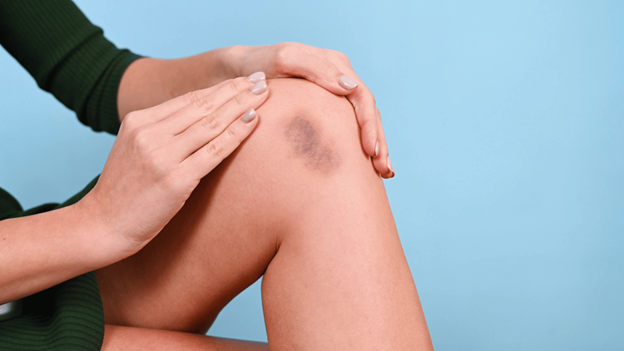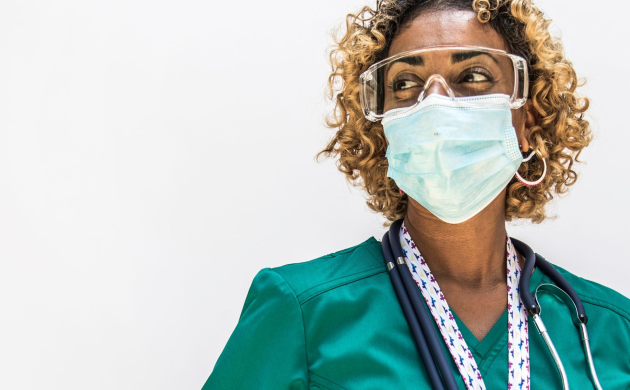
Bruise be gone: how to heal a bruise.
Ever had an unexpected bump against a table corner or a minor mishap during sports that led to a bruise? Bruises, those colorful badges of honor, can show up when we least expect them and sometimes, we are not entirely sure how we got them.
While they're typically harmless, bruises can be a bit of an eyesore and cause pain or tenderness, especially upon touch. In this guide, we dive into the world of bruises – what causes them and how we can help our body heal a bruise.
What is a bruise?
A bruise, or contusion, is a skin injury caused by broken capillaries beneath the skin's surface. This results in characteristic discoloration, tenderness, and sometimes swelling.
How bruises happen
- Capillary damage. Bruises occur when tiny blood vessels (capillaries) break due to injury.
- Healing process. The body responds by forming clots, initiating inflammation, and metabolizing trapped blood cells, leading to color changes.
Common causes of bruises.
Bruises can result from everyday accidents like bumps, slips, trips, falls, or sports-related impacts.
Most bruises are harmless and fade over time. However, monitoring unusual or persistent bruising is crucial, especially if accompanied by other symptoms. Understanding bruises helps you manage them better.
What kind of bruises should I worry about?
Bruises are a common occurrence and usually not a cause for concern. Most of the time, they result from minor injuries, and your body's natural healing process takes care of them.
However, there are instances where bruises may warrant closer attention.
Unexplained or frequent bruising.
If you notice bruises appearing regularly without a clear cause or explanation, it's essential to consult a healthcare provider. Frequent unexplained bruising can sometimes be a sign of an underlying medical condition.
Large or swollen bruises.
While larger bruises are generally not alarming, seek medical advice if they are accompanied by significant swelling, especially if it doesn't subside after a few days. It could indicate a more severe injury or internal bleeding.
Bruises that don't heal.
Most bruises fade away within a week or two. If you have a bruise that doesn't seem to heal or improve after this timeframe, consult a healthcare professional. It might indicate an issue with your body's clotting or healing mechanisms.
Bruising without injury.
If you notice bruises without any apparent trauma or injury, getting checked out is a good idea. It could be related to underlying health conditions like bleeding disorders or medication side effects.
Bruising alongside other symptoms.
If bruising is accompanied by other concerning symptoms such as severe fatigue, dizziness, or unexplained weight loss, it's essential to seek medical attention promptly.
Bruising in unusual locations.
Bruising in uncommon areas, like the abdomen or back, can sometimes be a sign of a more severe issue and should be evaluated by a healthcare provider.
The majority of bruises are harmless and part of life's minor mishaps. Paying attention to the above scenarios can help identify and promptly address any underlying issues. When in doubt, it's always a good idea to consult a healthcare professional at your local CityMD to rule out any significant concerns.
How to heal a bruise.
Healing a bruise is a natural process for your body. While you can't make a bruise vanish instantly, you can take steps to help it heal faster and reduce discomfort. Try these tips:
- Rest. Give the affected area a break. Avoid any activities or movements that could worsen the bruise or cause further injury.
- Cold compress. Apply a cold compress or ice wrapped in a cloth to the bruised area for about 15-20 minutes at a time. This helps reduce swelling and pain, especially in the initial stages.
- Elevation. If possible, elevate the bruised area above heart level. This can also assist in reducing swelling.
- Over-the-counter pain relief. Non-prescription pain relievers like ibuprofen or acetaminophen can help manage pain and inflammation. Follow recommended dosages.
- Warm compress. After 48 hours, switch to a warm compress to improve blood circulation and help the body reabsorb the trapped blood.
- Gentle massage. Lightly massaging the bruised area can encourage blood flow and aid in healing. Be very gentle to avoid causing further injury.
- Nutrition. Eating a balanced diet rich in vitamins C and K and sufficient protein can support the body's healing processes.
- Time. Ultimately, the most crucial factor in healing a bruise is time. Your body will naturally break down and reabsorb the trapped blood, and the bruise will fade.
Remember, while these steps can help accelerate the healing process, it's essential to consult a healthcare provider if the bruise is unusually large, painful, or accompanied by severe symptoms.
CityMD can help with bruise care.
Your body already knows how to heal a bruise, but a little TLC can speed things up. Remember, rest, cold compresses, and patience are your allies.
Don't hesitate to seek professional care if you have concerns about a stubborn bruise or any unusual symptoms. CityMD is here to support your health journey.

We’re ready to care for you.
Visit any CityMD urgent care location in your community today for an evaluation with one of our expert providers.